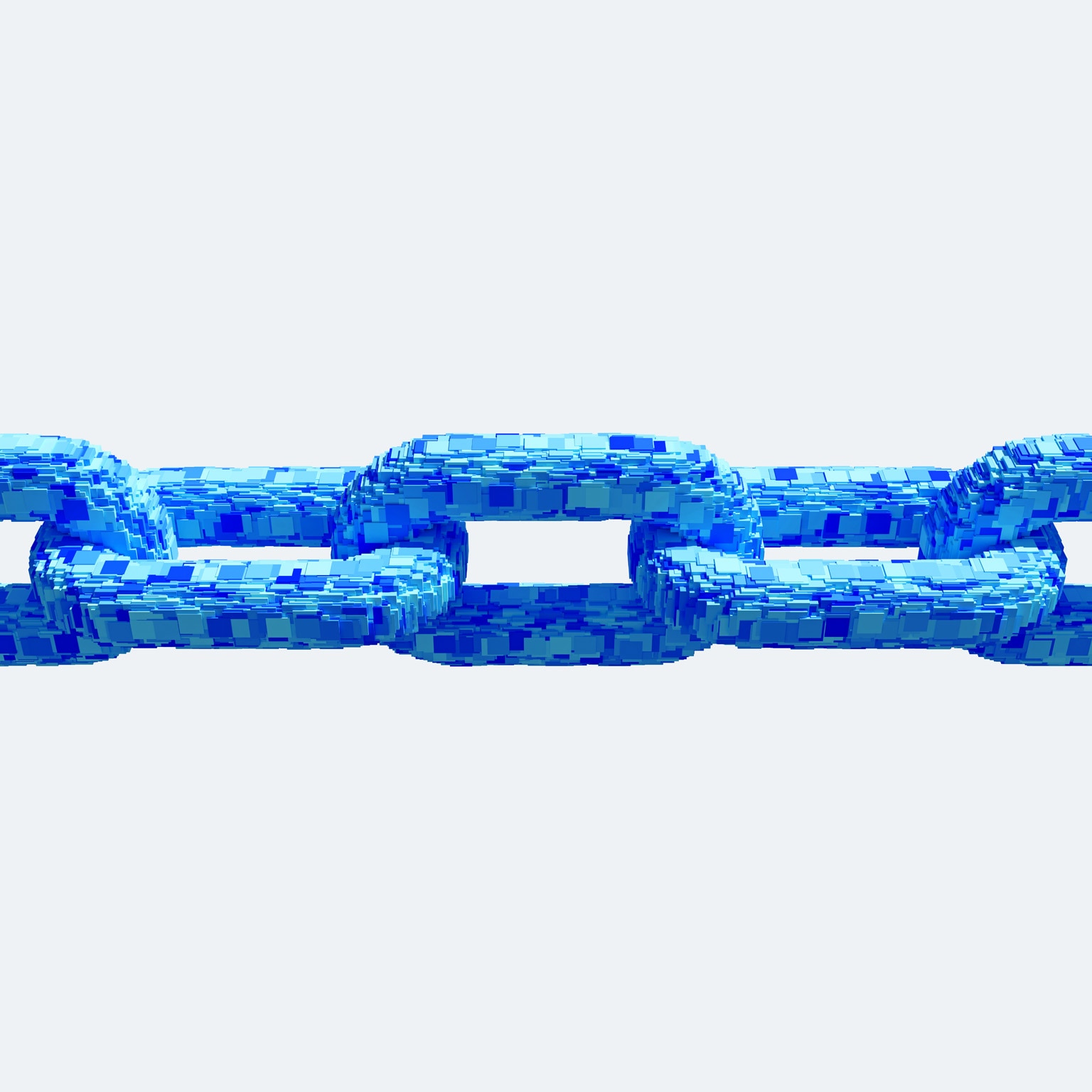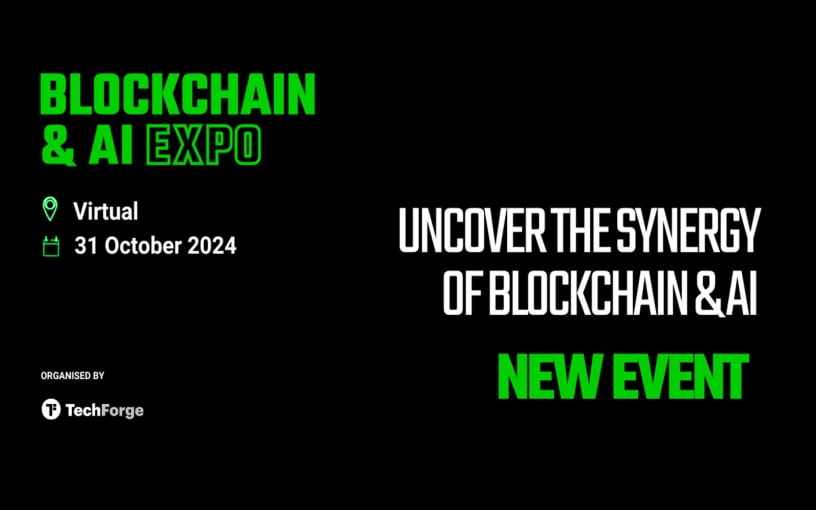News
What is blockchain? | McKinsey

” “
Blockchain is one of the major tech stories of the past decade. But beneath the surface chatter there’s not always a deep, clear understanding of what blockchain is, how it works, or what it’s for. Despite its reputation for impenetrability, the basic idea behind blockchain is pretty simple. And it has major potential to change industries from the bottom up.
Get to know and directly engage with McKinsey’s senior experts on blockchain
Brant Carson is a senior partner in McKinsey’s Vancouver office, and Marie-Claude Nadeau is a senior partner in the Bay Area office, where Michael Chui is a McKinsey Global Institute partner.
Put simply, blockchain is a technology that enables the secure sharing of information. Data, obviously, is stored in a database. Transactions are recorded in an account book called a ledger. A blockchain is a type of distributed database or ledger, which means the power to update a blockchain is distributed between the nodes, or participants, of a public or private computer network. This is known as distributed ledger technology (DLT). Nodes are rewarded with digital tokens or currency to make updates to blockchains.
Blockchain allows for the permanent, immutable, and transparent recording of data and transactions. This, in turn, makes it possible to exchange anything that has value, whether that’s a physical item or something more intangible.
A blockchain has three central attributes:
- First, a blockchain database must be cryptographically secure. That means you need two cryptographic keys to access or add data on the database: a public key, which is basically the address in the database, and the private key, which is an individualized key that must be authenticated by the network.
- Next, a blockchain is a digital log or database of transactions, meaning it happens fully online.
- And finally, a blockchain is a database that is shared across a public or private network. One of the most well-known public blockchain networks is the Bitcoin blockchain. Anyone can open a Bitcoin wallet or become a node on the network. Other blockchains are private networks. These are more applicable to banking and fintech, where people need to know exactly who is participating, who has access to data, and who has a private key to the database. Other types of blockchains include consortium blockchains and hybrid blockchains, both of which combine different aspects of public and private blockchains.
For all its potential, blockchain has yet to become the game changer some expected. So how can we know what’s real and what’s just hype? And can companies still use blockchain to build efficiency, increase security, and create value? Read on to find out.
Learn more about McKinsey’s Financial Services Practice.
How does blockchain work?
A deeper dive may help in understanding how blockchain and other DLTs work.
When data on a blockchain is accessed or altered, the record is stored in a “block” alongside the records of other transactions. Stored transactions are encrypted via unique, unchangeable hashes. New data blocks don’t overwrite old ones; they are “chained” together so any changes can be monitored.
These blocks of encrypted data are permanently “chained” to one another, and transactions are recorded sequentially and indefinitely, creating a perfect audit history that allows visibility into past versions of the blockchain.
When new data is added to the network, the majority of nodes must verify and confirm the legitimacy of the new data based on permissions or economic incentives, also known as consensus mechanisms. When a consensus is reached, a new block is created and attached to the chain. All nodes are then updated to reflect the blockchain ledger.

In a public blockchain network, the first node to credibly prove the legitimacy of a transaction receives an economic incentive. This process is called “mining.”
Here’s a theoretical example to help illustrate how blockchain works. Imagine that someone is looking to buy a concert ticket on the resale market. This person has been scammed before by someone selling a fake ticket, so she decides to try one of the blockchain-enabled decentralized ticket exchange websites that have been created in the past few years. On these sites, every ticket is assigned a unique, immutable, and verifiable identity that is tied to a real person. Before the concertgoer purchases her ticket, the majority of the nodes on the network validate the seller’s credentials, ensuring that the ticket is in fact real. She buys her ticket and enjoys the concert.
What is proof of work and how is it different from proof of stake?
Remember the idea of consensus mechanisms? There are two ways blockchain nodes arrive at a consensus: through private blockchains, where trusted corporations are the gatekeepers of changes or additions to the blockchain, or through public, mass-market blockchains.
Most public blockchains arrive at consensus by either a proof-of-work or proof-of-stake system. In a proof-of-work system, the first node, or participant, to verify a new data addition or transaction on the digital ledger receives a certain number of tokens as a reward. To complete the verification process, the participant, or “miner,” must solve a cryptographic question. The first miner who solves the puzzle is awarded the tokens.
Originally, people on various blockchains mined as a hobby. But because this process is potentially lucrative, blockchain mining has been industrialized. These proof-of-work blockchain-mining pools have attracted attention for the amount of energy they consume.
In September 2022, Ethereum, an open-source cryptocurrency network, addressed concerns about energy usage by upgrading its software architecture to a proof-of-stake blockchain. Known simply as “the Merge,” this event is seen by cryptophiles as a banner moment in the history of blockchain. With proof of stake, investors deposit their crypto coins in a shared pool in exchange for the chance to earn tokens as a reward. In proof-of-stake systems, miners are scored based on the number of native protocol coins they have in their digital wallets and the length of time they have had them. The miner with the most coins at stake has a greater chance to be chosen to validate a transaction and receive a reward.
Learn more about proof of stake.
How can businesses benefit from blockchain?
Blockchain and DLTs could create new opportunities for businesses by decreasing risk and reducing compliance costs, creating more cost-efficient transactions, driving automated and secure contract fulfillment, and increasing network transparency. Let’s break it down further:
- Reduced risk and lower compliance costs. Banks rely on “know your customer” (KYC) processes to bring customers on board and retain them. But many existing KYC processes are outdated and drive costs of as much as $500 million per year, per bank. A new DLT system might require only one KYC verification per customer, driving efficiency gains, cost reduction, and improved transparency and customer experience.
- Cost-efficient transactions. Digitizing records and issuing them on a universal ledger can help save significant time and costs, which can matter more in some trades than in others. In a letter of credit deal, for example, two companies opted for a paperless solution and used blockchain to trade nearly $100,000 worth of butter and cheese—clearly a time-sensitive transaction. By doing so, a process that previously took up to ten days was reduced to less than four hours—from issuing to approving the letter of credit.
- Automated and secure contract fulfillment. Smart contracts are sets of instructions coded into tokens issued on a blockchain that can self-execute under specific conditions. These can enable automated fulfillment of contracts. For example, one retailer wanted to streamline its supply-chain-management efforts, so it began recording all processes and actions, from vendor to customer, and coding them into smart contracts on a blockchain. This effort not only made it easier to trace the provenance of food for safer consumption but also required less human effort and improved the ability to track lost products.
Learn more about McKinsey’s Financial Services Practice.
How are blockchain, cryptocurrency, and decentralized finance connected?
Blockchain enables buyers and sellers to trade cryptocurrencies online without the need for banks or other intermediaries.
All digital assets, including cryptocurrencies, are based on blockchain technology. Decentralized finance (DeFi) is a group of applications in cryptocurrency or blockchain designed to replace current financial intermediaries with smart contract-based services. Like blockchain, DeFi applications are decentralized, meaning that anyone who has access to an application has control over any changes or additions made to it. This means that users potentially have more direct control over their money.
What else can blockchain be used for?
Cryptocurrency is only the tip of the iceberg. Use cases for blockchain are expanding rapidly beyond person-to-person exchanges, especially as blockchain is paired with other emerging technologies. Examples of other blockchain use cases include the following:
- With blockchain, companies can create an indelible audit trail through a sequential and indefinite recording of transactions. This allows for systems that keep static records (of land titles, for example) or dynamic records (such as the exchange of assets).
- Blockchain allows companies to track a transaction down to its current status. This enables companies to determine exactly where the data originated and where it was delivered, which helps to prevent data breaches.
- Blockchain supports smart contracts.
What are some concerns around the future of blockchain?
While blockchain may be a potential game changer, there are doubts emerging about its true business value. One major concern is that for all the idea-stage use cases, hyperbolic headlines, and billions of dollars of investments, there remain very few practical, scalable use cases of blockchain.
One reason for this is the emergence of competing technologies. In the payments space, for example, blockchain isn’t the only fintech disrupting the value chain—60 percent of the nearly $12 billion invested in US fintechs in 2021 was focused on payments and lending. Given how complicated blockchain solutions can be—and the fact that simple solutions are frequently the best—blockchain may not always be the answer to payment challenges.
Looking ahead, some believe the value of blockchain lies in applications that democratize data, enable collaboration, and solve specific pain points. McKinsey research shows that these specific use cases are where blockchain holds the most potential, rather than those in financial services.
Learn more about McKinsey’s Financial Services Practice.
How might blockchain evolve over time?
McKinsey estimates that there will be two primary development horizons for blockchain over the next decade:
- Growth of blockchain as a service (BaaS). BaaS is a cloud-based service that builds digital products for DLT and blockchain environments without any setup requirements for infrastructure. This is currently being led by Big Tech companies.
- Interoperability across blockchain networks and outside systems. Increased interoperability will mean that disparate blockchain networks and external systems will be able to view, access, and share one another’s data while maintaining integrity. Hardware standardization and scalable consensus algorithms will enable cross-network use cases—such as the Internet of Things on blockchain infrastructure.
These trends will be enabled partly because of increased pressure from regulators and consumers demanding greater supply chain transparency, and partly because of economic uncertainty, as consumers seek out independent, centrally regulated systems. And large corporations launching successful pilots will build confidence for consumers and other organizations.
Potential growth could be inhibited by a few factors: for one, several well-known applications have inherently limited scalability, including energy or infrastructure requirements. Further, uncertainty about regulatory or governance developments could keep consumers shy—for instance, if there is a lack of clarity on who will enforce smart contracts. The unresolved threat of cyberattacks also remains a fear for potential blockchain users. And finally, other tech trends—namely AI—have sucked up all the oxygen (and funding) in the room.
What do NFTs have to do with blockchain?
Nonfungible tokens (NFTs) are minted on smart-contract blockchains such as Ethereum or Solana. NFTs represent unique assets that can’t be replicated—that’s the nonfungible part—and can’t be exchanged on a one-to-one basis. These assets include anything from a Picasso painting to a digital “This is fine” dog meme. Because NFTs are built on top of blockchains, their unique identities and ownership can be verified through the ledger. With some NFTs, the owner receives a royalty every time the NFT is traded.
The NFT market is extremely volatile: in 2021, one NFT created by the digital artist Mike Winkelmann, also known as Beeple, was sold at Christie’s for $69.3 million. But NFT sales have shrunk dramatically since summer 2022. As of 2023, according to a report from crypto analysis firm dappGambl, 95 percent of NFTs are worth practically nothing.
Learn more about McKinsey’s Financial Services Practice.
How secure is blockchain?
Blockchain has been called a “truth machine.” While it does eliminate many of the issues that arose in Web 2.0, such as piracy and scamming, it’s not the be-all and end-all for digital security. The technology itself is essentially foolproof, but, ultimately, it is only as noble as the people using it and as reliable as the data they are adding to it.
A motivated group of hackers could leverage blockchain’s algorithm to their advantage by taking control of more than half of the nodes on the network. With this simple majority, the hackers have consensus and thus the power to verify fraudulent transactions.
In 2022, hackers did exactly that, stealing more than $600 million from the gaming-centered blockchain platform Ronin Network. This challenge, in addition to the obstacles regarding scalability and standardization, will need to be addressed. But there is still significant potential for blockchain, both for business and society.
For a more in-depth exploration of these topics, see McKinsey’s “Blockchain and Digital Assets” collection. Learn more about McKinsey’s Financial Services Practice—and check out blockchain-related job opportunities if you’re interested in working at McKinsey.
Articles referenced include:
- “What is Web3?,” October 10, 2023
- “McKinsey Technology Trends Outlook 2023,” July 20, 2023
- “Forward Thinking on tech and the unpredictability of prediction with Benedict Evans,” April 6, 2022, Janet Bush and Michael Chui
- “Seven technologies shaping the future of fintech,” November 9, 2021, Dick Fong, Feng Han, Louis Liu, John Qu, and Arthur Shek
- “CBDC and stablecoins: Early coexistence on an uncertain road,” October 11, 2021, Ian De Bode, Matt Higginson, and Marc Niederkorn
- “Blockchain and retail banking: Making the connection,” June 7, 2019, Matt Higginson, Atakan Hilal, and Erman Yugac
- “Blockchain 2.0: What’s in store for the two ends—semiconductors (suppliers) and industrials (consumers)?,” January 18, 2019, Gaurav Batra, Rémy Olson, Shilpi Pathak, Nick Santhanam, and Harish Soundararajan
- “Blockchain’s Occam problem,” January 4, 2019, Matt Higginson, Marie-Claude Nadeau, and Kausik Rajgopal
- “Blockchain explained: What it is and isn’t, and why it matters,” September 28, 2018, Brant Carson and Matt Higginson
This article was updated in June 2024; it was originally published in December 2022.
News
Blockchain Technology Will Transform Water Access and Management Globally

Disclosure: The views and opinions expressed here are solely those of the author and do not represent the views and opinions of the crypto.news editorial team.
Access to clean water is a basic human need, yet billions of people around the world still struggle to get it. According to the World Health Organization, over 2 billion people live in countries suffering from severe water stress, and this number is expected to continue to grow due to climate change and population growth.
Traditional water management systems have struggled to address these challenges, often hampered by inefficiencies, lack of transparency, and misallocation of resources. Blockchain technology offers a promising solution to these challenges, providing equitable access and sustainable use of this crucial resource.
The current state of water management
Water management today faces several pressing issues. Inefficiencies in water supply, distribution, and use, coupled with a lack of real-time monitoring, often result in resource waste and misallocation. Many water sources fail to realize their full potential due to infrastructure and financing shortfalls. For example, the Environmental Protection Agency (EPA) report indicated that the United States would need to invest $625 billion over the next 20 years to repair, maintain and improve the country’s drinking water infrastructure due to aging pipes and other infrastructure problems. Additionally, in the United States alone, household leaks can to waste nearly 900 billion gallons of water per year nationwide. This is equivalent to the annual domestic water consumption of nearly 11 million homes.
Furthermore, corruption and mismanagement of water resources can cause unequal distribution, with disadvantaged communities often bearing the brunt of water scarcity. For example, South Africa is struggling with myriad challenges to its water security: drought, inadequate water conservation measures, outdated infrastructure, and unequal access to water resources. The country faces significant water scarcity, with demand expected to outstrip supply by 2030, creating a projected gap of 17%.
Furthermore, the global water industry is highly monopolized, with a few key players controlling a significant share of the market. These companies exert substantial influence over the water supply chain, often prioritizing profit over equitable distribution and environmental responsibility. This concentration of power can lead to inflated prices and limited access for vulnerable populations. The global bottled water market alone is projected to reach $509.18 billion by 2030, with these large companies capturing a significant share of revenue. This monopolization exacerbates existing inequalities in water access and highlights the need for more decentralized and community-driven water management solutions.
Source: Grand View Search
The potential of blockchain in water management
Blockchain technology can address these issues by providing a transparent, secure, and decentralized platform for water resource management. This approach offers several advantages:
- Transparency and accountability. Blockchain’s immutable ledger ensures that all transactions and data entries are transparent and cannot be changed once recorded. This transparency can reduce corruption and ensure that water resources are allocated fairly and efficiently. For example, blockchain can be used to track water usage from source to end user, providing a clear record of how water is distributed and used. This level of transparency can help hold authorities accountable and manage water resources sustainably.
- Efficient resource management. Blockchain can facilitate the creation of smart contracts, which are self-executing contracts with the terms of the agreement written directly into the code. These contracts can automate water distribution based on real-time data, directing water to where it is needed most. For example, smart contracts could be used to manage urban water supply systems, automatically adjusting water distribution based on real-time consumption patterns and demand. This can help optimize water use, reduce waste, and ensure that households and businesses receive the right amount of water at the right time.
In Dubai, the Dubai Electricity and Water Authority (DEWA) has implemented a blockchain-based smart water network initiative as part of its broader smart city strategy. This project integrates blockchain technology with IoT sensors to monitor water usage in real time, manage distribution, and detect leaks. The decentralized ledger ensures data integrity and transparency, enabling more efficient water management and reduced waste. DEWA’s initiative aims to improve sustainability and resource management in the rapidly growing city, highlighting the potential of blockchain to support urban water management and conservation efforts.
Community participation and ownership
Through blockchain, individuals can directly control and monetize their access to water resources, eliminating the need for third-party intermediaries. This direct control model allows local communities to make collective and transparent decisions about their water use. By managing their water directly from the source, communities can tailor water management practices to their specific needs, promoting equitable distribution and encouraging a sense of accountability and stewardship.
Additionally, future models could allow people to monetize their access to water through web3 technologies. For example, a community-to-business (C2B) model could allow people to sell water directly to companies. In this model, people do not have to own the water directly, but can profit by staking their tokens during event sales pools. This approach not only supports sustainable water management, but also creates economic opportunities for community members. Additionally, a “Burn to Secure” protocol can be used to provide water allocation rights. This protocol provides a true sense of water security and financial opportunity by allowing people to redeem their rights. This system not only secures future water allocations, but also increases token scarcity and value.
Additionally, a pure sense of investment is achieved through investments in water sources. This leads to potential financial returns and dividends by addressing the inefficiencies in water supply mentioned above. By investing to finance infrastructure projects, such as building factories and improving distribution systems, more water can be brought to communities, creating additional economic opportunities.
Monetizing water access through the C2B model, the “Burn to Secure” protocol, and investments in water sources all generate economic benefits for the community, promoting a more equitable and efficient water management system.
Overcoming challenges
While blockchain technology has the potential to improve water management, there are challenges to its adoption. The complexity of blockchain systems and the need for technological infrastructure can be barriers, especially in developing regions. Additionally, there are concerns about the significant energy consumption of blockchain networks. However, technological advances and the development of more energy-efficient blockchain solutions are helping to alleviate these concerns. Additionally, education and capacity building are key to ensuring stakeholders understand how to effectively use blockchain technology. Governments, NGOs, and private sector partners need to work together to provide training and support to communities and water management authorities.
Blockchain technology offers a practical and effective means to improve water management. In addition to addressing inefficiencies, blockchain empowers communities, promotes sustainable practices, and opens up new economic opportunities through models like community-to-business (C2B). As we face the growing challenges of climate change and population growth, blockchain is not only an innovative solution, but represents a fundamental shift in the way we manage and value water resources. Adopting blockchain in water management is essential to creating a sustainable and equitable future by changing the way we interact with and protect our most vital resource.

Jean-Hugues Gavarini
Jean-Hugues Gavarini is the CEO and co-founder of LAKE (LAK3), a real-world asset company leveraging blockchain technology to decentralize access to the global water economy. LAKE aims to ensure access to clean water for all, protect water resources, and deliver water to those in need through innovative technologies. Jean-Hugues has a diverse career spanning the luxury, fashion, and footwear industries. His career path includes notable successes at Mellow Yellow, Cremieux, and Tod’s. Raised between Silicon Valley and the French Alps, Jean-Hugues has always been immersed in technology and freshwater resources. In 2018, Jean became the CEO of Lanikea Waters, a water solutions entity based in the French Alps. In 2019, the concept of LAKE was born, embodying his commitment to innovation and sustainability.
News
Blockchain and AI Expo 2024

With rapid advances in the world of AI and blockchain, there are opportunities to leverage the security and transparency features of blockchain to improve the reliability and trust of AI systems and data transactions.
Explore the synergy of these advanced technologies in virtual mode Blockchain and AI Expowhich takes place on October 31, 2024 TO 10:00 GMT.
The event features cutting-edge presentations led by leading experts in evolving fields. Presentations are set to explore opportunities and challenges in the fusion of blockchain and AI, real-world applications, ethics, innovations in environmental sustainability, and more!
Gain a comprehensive understanding of how these technologies can synergistically drive innovation, optimize operations, and promote strategic growth opportunities. Develop your knowledge to facilitate informed decision making and give your company a competitive edge in the growing technology landscape.
News
Nigeria Eyes National Blockchain Nigerium for Data Sovereignty

Nigeria is keeping an eye on a new native blockchain network to protect the country’s data sovereignty.
According to local media, a team from the University of Hertfordshire has proposed the new blockchain, Nigeriato the National Information Technology Development Agency (NITDA).
Chanu Kuppuswamy, who leads the team, argued that relying on blockchain networks whose developers are located in other regions poses national security risks to the Nigerian government. He further said that Nigerium would allow the West African nation to customize the network to meet specific needs, while also promoting data sovereignty.
In his presentation, Chanu cited the recent migration of Ethereum to test of participation (PoS) consensus as an instance in which no Nigerians were involved but whose impact is far-reaching.
“Developing an indigenous blockchain like Nigerium is a significant step towards achieving data sovereignty and promoting trust in digital transactions in Nigeria,” he said.
While receiving the proposals in Abuja, NITDA’s Kashifu Abdullahi acknowledged the benefits a local blockchain would bring to Nigeria, including increased security of citizens’ data.
However, a NITDA spokesperson later clarified that Nigerium is still at the proposal stage and that the government has not yet decided whether to proceed or not.
“The committee is still discussing the possibility with stakeholders. Even if a decision is finally made, there is no guarantee that the name will be Nigerium,” the spokesperson told the media.
Nigerium’s reception in the country has been mixed. Some, like financial analyst Olumide Adesina, To say the network is “dead on arrival”. He believes the Nigerian government’s poor record in following through on its big technology plans will claim another victim. He pointed to the eNaira as a missed opportunity whose chances of success were much higher than those of Nigerium.
Others welcomed the proposal. Chimezie Chuta, who chairs the renewed The Nigerian Blockchain Policy Committee is “extremely optimistic“that Nigerium will be more successful than eNaira.
Speaking to a local news agency, Chuta stressed that eNaira failed because the central bank initiated the project on its own, without involving any stakeholders.
“They just cooked it and expected everyone to like it. [With Nigerium]there will be a lot of collaboration,” he said.
Registration of property title, digital identity and Certificate Verification are among the use cases that Nigerium is expected to initially target. However, Nigeria has already made progress in some of these fields through public blockchains.
SPPG, a leading school in governance and politics, announced in May the country’s first blockchain certificate verification system. Built on the The BSV BlockchainIt was developed in collaboration with the blockchain data recording company VX Technologies and local lender Sterling Bank.
Watch: The Future Has Already Arrived in Nigeria
 Italian: https://www.youtube.com/watch?v=M40GXUUauLU width=”560″ height=”315″ frameborder=”0″ allowfullscreen=”allowfullscreen”>
Italian: https://www.youtube.com/watch?v=M40GXUUauLU width=”560″ height=”315″ frameborder=”0″ allowfullscreen=”allowfullscreen”>
New to blockchain? Check out CoinGeek Blockchain for Beginners section, the definitive guide to learn more about blockchain technology.
News
Cambodian CBDC Developer to Build Palau Bond Market on Blockchain: Report

A Japanese fintech developer will build a blockchain-based bond market gateway for Palau, aiming to launch a trial in 2024 and a full launch the following year.
Japanese fintech developer Suramitsubest known for developing a central bank digital currency (CBDC) for Cambodia, is intended to build a Blockchain-gateway to the bond market based on the Pacific island nation of Palau, Nikkei He learned.
Soramitsu won the contract and plans to introduce the market on a trial basis in fiscal 2024, with a full launch scheduled for the following year, allowing the Palauan government to issue bonds to individual investors and efficiently manage principal and interest payments, according to the report.
The total cost of the project is estimated at several hundred million yen ($1.2 million to $5.6 million), less than half the cost of a non-blockchain alternative, people familiar with the matter said. The project has reportedly received support from Japan’s Ministry of Economy, Trade and Industry, with Japan’s foreign and finance ministries providing strategic and management advice on the project.
Soramitsu’s successful development of Cambodia’s CBDC in 2020 has boosted its reputation, with the digital currency’s popularity soaring, with over 10 million accounts opened by December 2023, representing 60% of Cambodia’s population. Following this, Cambodia’s central bank governor Chea Serey indicated intends to expand the reach of its CBDC internationally, particularly through collaboration with UnionPay International, the Chinese card payment service, and other global partners.
While Soramitsu’s work in Cambodia has been well received, the long-term popularity of CBDCs remains to be seen. As of late June, crypto.news reported a sharp drop in activity in India’s digital currency, the e-rupee, after local banks stopped artificially inflating its values.
According to people familiar with the matter, the Reserve Bank of India managed to hit the 1 million retail transaction milestone last December only after the metrics were artificially infiltrated by local banks, which offered incentives to retail users and paid a portion of the bank’s employees’ salaries using the digital currency.
-

 News1 year ago
News1 year ago“Captain Tsubasa – RIVALS” launches on Oasys Blockchain
-

 Ethereum1 year ago
Ethereum1 year agoComment deux frères auraient dérobé 25 millions de dollars lors d’un braquage d’Ethereum de 12 secondes • The Register
-

 News1 year ago
News1 year agoSolana ranks the fastest blockchain in the world, surpassing Ethereum, Polygon ⋆ ZyCrypto
-

 Videos1 year ago
Videos1 year agoHistoric steps for US cryptocurrencies! With a shocking majority vote!🚨
-

 Videos1 year ago
Videos1 year agoIs Emorya the next gem💎 of this Bitcoin bull run?
-

 News1 year ago
News1 year agoSolana Surpasses Ethereum and Polygon as the Fastest Blockchain ⋆ ZyCrypto
-

 Videos1 year ago
Videos1 year agoNexus Chain – Ethereum L2 with the GREATEST Potential?
-

 Ethereum1 year ago
Ethereum1 year agoScaling Ethereum with L2s damaged its Tokenomics. Is it possible to repair it?
-

 News1 year ago
News1 year agoFnality, HQLAᵡ aims to launch blockchain intraday repositories this year – Ledger Insights
-

 Regulation1 year ago
Regulation1 year agoFinancial Intelligence Unit imposes ₹18.82 crore fine on cryptocurrency exchange Binance for violating anti-money laundering norms
-

 Bitcoin1 year ago
Bitcoin1 year agoBitcoin Drops to $60K, Threatening to Derail Prices of Ether, Solana, XRP, Dogecoin, and Shiba Inu ⋆ ZyCrypto
-

 Videos1 year ago
Videos1 year agoRaoul Pal’s Crypto Predictions AFTER Bitcoin Halving in 2024 (The NEXT Solana)











